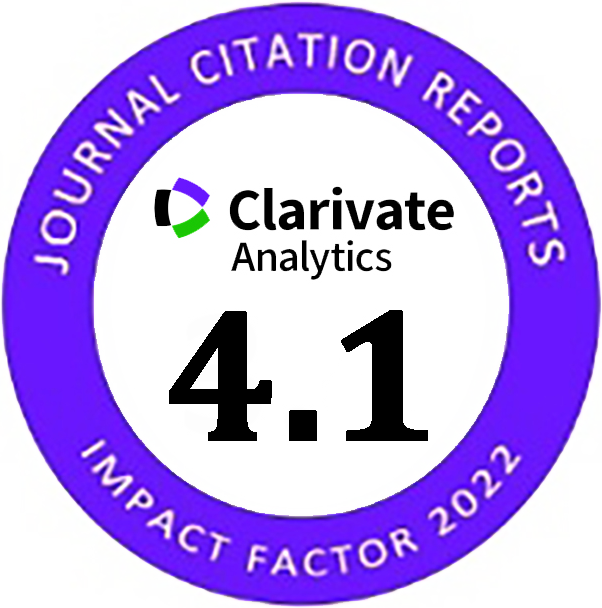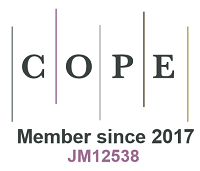Gum Arabic as an Admixture in Modified Concrete Mixed with Calcined Kaolin
Abstract
Doi: 10.28991/CEJ-2022-08-05-010
Full Text: PDF
Keywords
References
Xu, Q., Ji, T., Gao, S. J., Yang, Z., & Wu, N. (2018). Characteristics and applications of sugar cane bagasse ash waste in cementitious materials. Materials, 12(1), 39. doi:10.3390/ma12010039.
Singh, N. B. (2022). Clays and Clay Minerals in the Construction Industry. Minerals, 12(3), 301. doi:10.3390/min12030301.
Mousavi, S. S., Bhojaraju, C., & Ouellet-Plamondon, C. (2021). Clay as a Sustainable Binder for Concrete—A Review. Construction Materials, 1(3), 134–168. doi:10.3390/constrmater1030010.
Jaskulski, R., Jóźwiak-Niedźwiedzka, D., & Yakymechko, Y. (2020). Calcined clay as supplementary cementitious material. Materials, 13(21), 1–36. doi:10.3390/ma13214734.
Dhandapani, Y., Sakthivel, T., Santhanam, M., Gettu, R., & Pillai, R. G. (2018). Mechanical properties and durability performance of concretes with Limestone Calcined Clay Cement (LC3). Cement and Concrete Research, 107, 136–151. doi:10.1016/j.cemconres.2018.02.005.
Rashad, A. M. (2015). Metakaolin: Fresh properties and optimum content for mechanical strength in traditional cementitious materials - A comprehensive overview. Reviews on Advanced Materials Science, 40(1), 15–44.
Arslan, F., Benli, A., & Karatas, M. (2020). Effect of high temperature on the performance of self-compacting mortars produced with calcined kaolin and metakaolin. Construction and Building Materials, 256, 119497. doi:10.1016/j.conbuildmat.2020.119497.
Karatas, M., Benli, A., & Arslan, F. (2020). The effects of kaolin and calcined kaolin on the durability and mechanical properties of self-compacting mortars subjected to high temperatures. Construction and Building Materials, 265, 120300. doi:10.1016/j.conbuildmat.2020.120300.
Al-Shaeli, M., Al-Juboori, R. A., Al Aani, S., Ladewig, B. P., & Hilal, N. (2022). Natural and recycled materials for sustainable membrane modification: Recent trends and prospects. Science of the Total Environment, 838, 156014. doi:10.1016/j.scitotenv.2022.156014.
Elinwa, A. U., Abdulbasir, G., & Abdulkadir, G. (2018). Gum Arabic as an admixture for cement concrete production. Construction and Building Materials, 176, 201–212. doi:10.1016/j.conbuildmat.2018.04.160.
Mbugua, R., Salim, R., & Ndambuki, J. (2016). Effect of Gum Arabic Karroo as a water-reducing admixture in cement mortar. Case Studies in Construction Materials, 5, 100–111. doi:10.1016/j.cscm.2016.09.002.
BS 1881-116. (1983). Testing concrete-Part 116: Method for determination of compressive strength of concrete cubes. British Standard, London, United Kingdom.
BS 4550-3 Method of testing cement-Physical tests. British Standard, London, United Kingdom. doi:10.3403/BS4550-3.
ASTM C267-01. (2017). Standard test Methods for Chemical Resistance of mortars, Grouts, and Monolithic surfacing and Polymer Concretes. ASTM International. Pennsylvania, United States. doi:10.1520/C0267-01.
Elinwa, A. U., & Umar, M. (2017). X-ray diffraction and microstructure studies of gum Arabic-cement concrete. Construction and Building Materials, 156, 632–638. doi:10.1016/j.conbuildmat.2017.08.162.
Rong, Z., Sun, W., Xiao, H., & Jiang, G. (2015). Effects of nano-SiO2 particles on the mechanical and microstructural properties of ultra-high performance cementitious composites. Cement and Concrete Composites, 56, 25-31. doi:10.1016/j.cemconcomp.2014.11.001.
Ariffin, M. A. M., Bhutta, M. A. R., Hussin, M. W., Tahir, M. M., & Aziah, N. (2013). Sulfuric acid resistance of blended ash geopolymer concrete. Construction and building materials, 43, 80-86. doi:10.1016/j.conbuildmat.2013.01.018.
Franus, W., Panek, R., & Wdowin, M. (2015). SEM investigation of microstructures in hydration products of Portland cement. In 2nd International Multidisciplinary Microscopy and Microanalysis Congress, 105-112. doi:10.1007/978-3-319-16919-4_14.
Eltawil, K. A., Tahwia, A. M., Mahdy, M. G., & Abdelraheem, A. H. (2021). Properties of High-Performance Concretes made of Black Sand at High Temperature. Civil Engineering Journal, 7(1), 24–39. doi:10.28991/cej-2021-03091634.
Medeiros, M. G., Nadaleti, W. C., Rocha, J. C., Cheriaf, M., Gleise, P. J. P., & de Castilhos, A. B. (2021). A cleaner material production by the incorporation of the rockwool waste into Portland cement matrices. Journal of Cleaner Production, 293, 126059. doi:10.1016/j.jclepro.2021.126059.
DOI: 10.28991/CEJ-2022-08-05-010
Refbacks
- There are currently no refbacks.
Copyright (c) 2022 Garcia Frichnes MISSENGUE MOUANDA

This work is licensed under a Creative Commons Attribution 4.0 International License.






